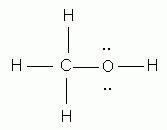Heats of Reaction and Hess's Law
By: Grace Kilpatrick
Hi everyone! I hope you all are having a wonderful Thursday! Here is how class went today...
-First, Mrs. Friedmann checked in last night's homework. This was the Hess's Law-Practice worksheet and the Hess's Law worksheet, both which can be found in the Unit 8 Handouts folder. Due to time constraints, we did not have time to go over these in class. However, it is part of the homework to check the answer key to these worksheets, which is labeled as 5_Key_to_Hesss_Law_HW.pdf in the Unit 8 Keys Folder.
-Next, we went over the Heats of Reaction and Hess's Law pre-lab. These are the notes:
-For the rest of the period, we worked with a partner to collect experimental data for the Heats of Reaction and Hess's Law Lab. Mrs. Friedmann has uploaded lab data to use if you were absent in the Unit 8 Labs and Activities. This is my group's data. The upper portion is that data collected for reaction #1, where the lower portion is that data collected for reaction #2.
HOMEWORK:
-Check last night's homework with the answer keys online.
-See Webassign for the "Chapt. 9.1-2 - Solids and Liquids - Rdg Sheet" assignment due March 4th, at 11:59 PM
-Begin working on write up for today's lab-likely to be due Tuesday.
The next blogger will be...Juliette O.!







